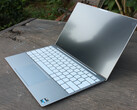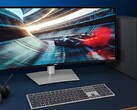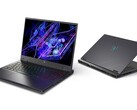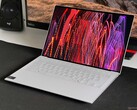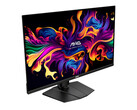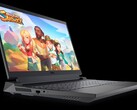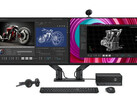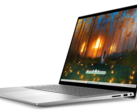Dell has axed its well-known XPS 15 and aside from the XPS 13, it now offers an XPS 14 as well as an XPS 16. We had the chance to test the high-end variant of the new XPS 14 9440 with a high-resolution OLED touchscreen and a dedicated Nvidia GeForce RTX 4050 Laptop graphics card. However, we aren't quite yet sure which target market the new XPS 14 aims to attract and its general concept does give you the feeling that its design has been prioritized more than anything.
The laptop's aluminum case is clearly inspired by the XPS 13 Plus and it is high-quality and stable—plus, the new input devices look great. In practical use, however, neither the new keyboard nor the touch pad feels totally ergonomic and if anything, we only see disadvantages compared to traditional input devices. Its frameless touchpad, on the other hand, is a success. One thing that you notice much more in everyday use is how bulky, thick and heavy the new XPS 14 is. In fact, most of its competitors are slimmer and more lightweight—but still, Dell throttles the components' performance. Its graphics card, in particular, suffers from this as it doesn't even reach its lower TGP limit of 35 watts and even when using the fastest energy profile, the RTX 4050 Laptop is only able to consume 30 watts. This makes this the slowest version of the 4050 Laptop that we have tested so far. The device's cooling unit also isn't particularly quiet, which begs the question of why such a thick case is necessary.
The device's screen consists of a high-resolution 3.2K OLED panel which has a 120-Hz refresh rate and is touch-sensitive. Subjectively, its picture quality is generally great but if you take a closer look, you'll see a raster effect when viewing light content. This isn't an issue on the newest OLED generation from Samsung (such as inside the current Galaxy Book4 models), plus, its maximum SDR brightness is better, too. A positive, on the other hand, is how accurate its P3 and sRGB profiles are. In turn, the OLED does also harm the laptop's runtimes, which are only average.
All-in-all, you'll have to take quite a few compromises into account if you purchase the XPS 14 9440—and its price is by no means justified. If you imagine that you can get a thinner and more lightweight Asus ROG Zephyrus G14 with much faster components (Ryzen 9 8945HS and RTX 4070 Laptop) and for a lower price, then aside from the ability to equip the XPS 14 with 64 GB RAM, there is no legitimate reason to buy the new XPS 14. The same can even be said for its base variant with the Arc iGPU, which we went more into in our detailed review of the device. There, you can also find all of our measurements, benchmark results as well as a calibrated profile which lets you make the most out of the OLED panel.





